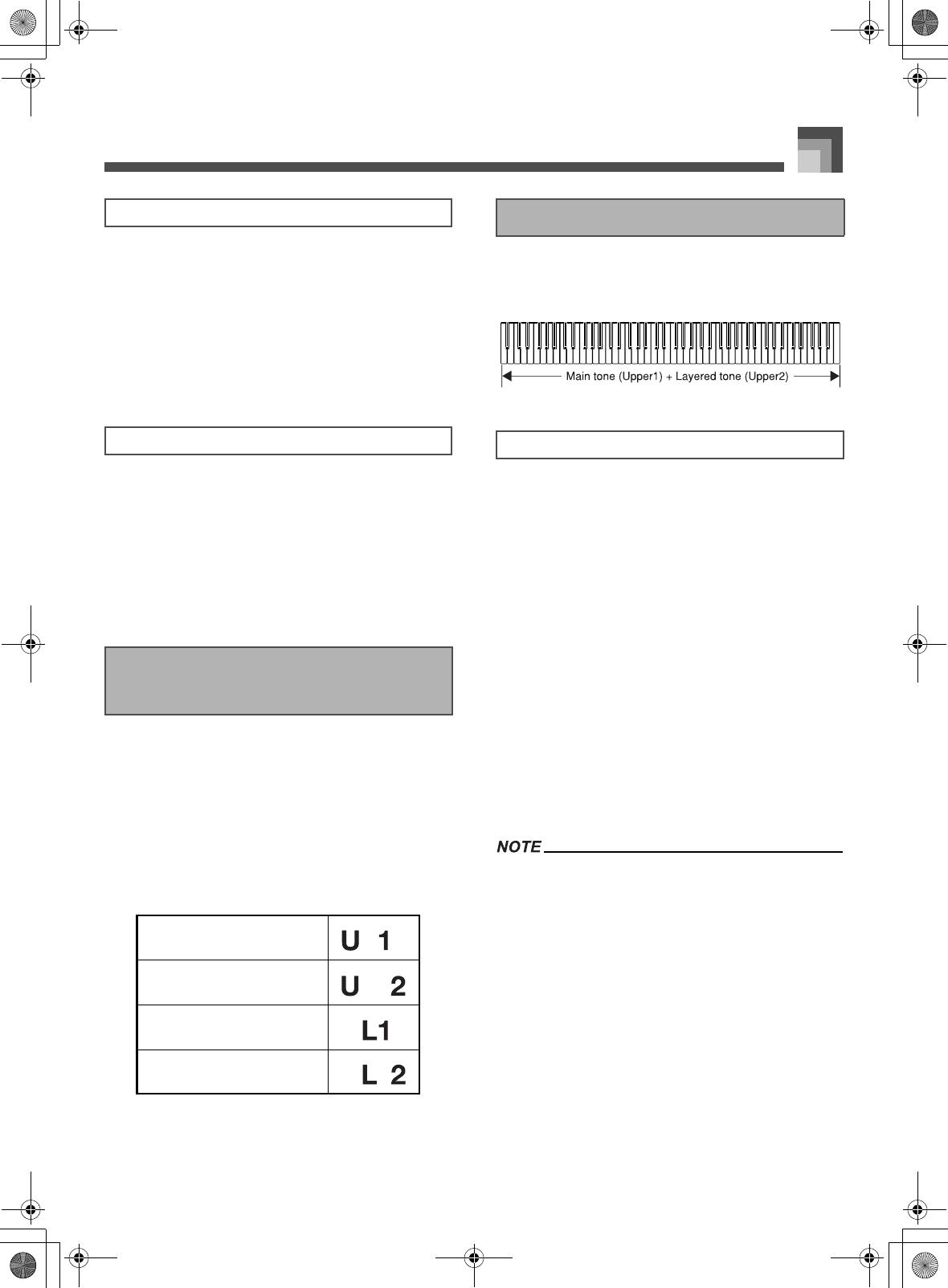
E-19
Basic Operations
The term polyphony refers to the maximum number of notes
you can play at the same time. This piano has 64-note
polyphony, which includes the notes you play as well as the
rhythms and auto-accompaniment patterns that are played
by the piano. This means that when a rhythm or auto-
accompaniment pattern is being played by the piano, the
number of notes (polyphony) available for keyboard play is
reduced. Also note that some of the tones provide only 32-
note polyphony.
A number of the tones that are available with this piano have
been recorded and processed using a technique called digital
sampling. To ensure a high level of tonal quality, samples are
taken in the low, mid, and high ranges and then combined to
provide you with sounds that are amazingly close to the
originals. You may notice very slight differences in volume or
sound quality for some tones when you play them at different
positions on the keyboard. This is an unavoidable result of
multiple sampling, and it is not a sign of malfunction.
This piano lets you use up to four parts simultaneously for
your performances. The parts are named Upper1, Upper2,
Lower1, and Lower2, and the display shows the tone
currently assigned to each.
You can use the PART/(MIXER) button to display the tones
that are assigned for each part (Upper1, Upper2, Lower1,
Lower2). Each press of PART/(MIXER) button cycles through
the parts in the sequence shown below. While a part is
displayed, you can change the tone assigned to it (page E-18).
With layer you can assign two different tones (a main tone
and a layered tone) to the keyboard, both of which play
whenever you press a key.
1. Select the main tone.
2. Press the LAYER/(GROUP A/B) button to turn
on tone layering.
This causes the indicator lamp of the button to
light.
The currently layered tone name appears on the
display. You can use the TONE buttons to change
the layered tone if you want.
3. Select the layered tone.
4. Now try playing something on the keyboard.
Both tones are played at the same time.
5. Press the LAYER/(GROUP A/B) button again to
unlayer the tones and return the keyboard to
normal.
This causes the indicator lamp of the button to go
out.
Layering is disabled during demo tune play and in the
Music Library Mode (while Music Library Mode lamp is lit).
Layering is achieved by sounding Upper1 and Upper2 of
mixer Group A. This means you can use the mixer to
change the volume balance and stereo pan position
parameters for both the main tone and layered tone. See
“Using the Mixer” on page E-46 for details.
Polyphony
Digital Sampling
Upper1, Upper2, Lower1,
Lower2
Upper1
Upper2
Lower1
Lower2
Using Layer
To layer two tones
426-E-021A
PL40NE01-1.book 19 ページ 2002年7月23日 火曜日 午後6時52分


















